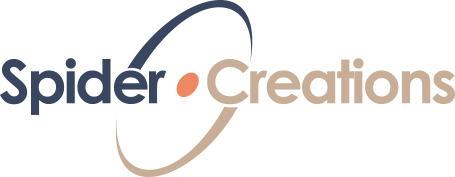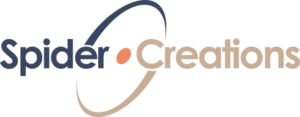Internet tip: Writing website articles and product descriptions
Previously, I penned an article on search engine optimization for dive centers and other websites. Those basics still apply today, but since then, I’ve been using the Yoast SEO plugin – free and premium versions – and learning from my mistakes.
What do search engines like to see?
Regarding the structure of a website article or a product on an eCommerce store, there are certain elements and layouts that search engines prefer. Their preferences are designed to ensure results are more relevant to users. One way search engines accomplish this goal is to rank articles that are easy to scan. When you write content that is easy to scan, it will help site visitors find relevant information.
Nielson Norman Group found users have time to read at most 28 percent of the words on a web page. So what can we do to help our site visitors scan and find what they are looking for?
Use sections and header elements
First, your page, post, or product headline must use the h1 tag. In WordPress, this is usually done for you, but if you are using a page builder and manually inserting the page title, you’ll need to ensure it is an H1. For example, if you look at the code, your page title should look like this.
<h1>Writing website articles and product descriptions</h1>
Additional sections below the h1 tag should first be h2, then h3 and so on.
More tips
- Search engines favor bullet points and other lists. (Again, these are easy to scan.)
- Use short paragraphs and sentences that are easy to read. Yoast SEO will help you, as will using a tool like Grammarly.
- Include three or four relevant images with proper ALT tags.
- For an article, 600 to 700 words is good for SEO, but do not rephrase content or add words to meet this guideline.
- In general, big blocks of text are not wise, as the visitor can not scan them.
Writing website articles
The most important part of an article is the first paragraph. You must let your audience know what you’re writing about when writing for the web. You cannot meander around until paragraph three or four. Readers will quickly dismiss your post if they have no idea where you’re headed. When writing business communications or for a newspaper, it’s important to inform readers – who, what, where, why, and when. The same applies when writing website articles.
You certainly do not have to force your entire article into the first two paragraphs, but be short and sweet. “Tell them what you’re going to tell them” is a term we use when creating presentations for a class or business meeting. Could you give them the basics right up front? If you intend on using an analogy, question, or story to gain your reader’s attention at the start of your article, make it brief and relevant.
An analogy, question, or story at the beginning of your piece can be very effective if it includes keywords specific to your topic.
Keywords within website articles
If you wanted someone to find your article using Google, Bing, or any other search engine, what words would they use to find it? It would be best to think about this when writing your piece and creating your headline. Those keywords must be included very close to the beginning of your article and in your headline. There are no exceptions if you want to improve your search engine results (SEO).
Headlines
Frequently it’s better to write your headline after you’ve written your article. Look back at your website article and determine the most important keywords. Include the keywords in these areas:
- The headline
- The first paragraph of the article
- In the meta description (the article abstract or excerpt)
- Within subheadings (H2, H3…)
Subheadings
Concerning subheadings, use them, and instead of bolding a subheading, use the Heading 2 or Heading 3 style.
Image ALT text and captions
You should include image ALT text when you upload an image and include it in an article (see below). You’ll also want to ensure the ALT text contains one or more keywords for your article. In addition, the ALT text should be meaningful within the context of the article.
You can also include a caption for your image. People do read image captions. While scanning, they stop at pictures and read the caption.
Follow the Yoast SEO Plugin tips.
Go through the Yoast SEO section to improve the SEO of your article. The Snippet Preview lets you know how the search result will display in Google. (The premium version of the Yoast SEO plugin provides additional information.) You can check to see if your headline is too long (or too short), and you should also edit the meta description. By default, the search engine pulls the first sentence or two, which may be a terrible description of your article shown in the search results.
Enter your Focus Keyword. Yes, you can put two or three words here, but the plugin will only score those keywords if they are used together in the exact order you provided. If you’re frequently stuck and want to do more, the Yoast SEO premium allows you to add up to five keywords per article or page.
Review the Analysis section to see where you can improve. If you score as “Green” for the Keyword, you’ve done an excellent job and can move on to the Readability section.
Improving readability can be more of a challenge. Still, the plugin does an excellent job of pointing out areas for improvement. For example, subheading paragraph length, using a passive voice, and copy scores are considered. Click on the eyeball to highlight areas where improvement is suggested in your article.
General tips
Ignore the outdated two spaces after a period rule
When I learned how to type in high school, we were taught to add two spaces after a period to help make sentences easier to read. That rule has long passed with the introduction of proportional fonts. It also screws things up for responsive websites that adjust the text based on the browser window’s width. In general, never use the spacebar more than once at a time. Likewise, don’t use extra spaces to make room for a graphic or to create a paragraph indent.
Images should be resized and have a helpful filename before uploading
WordPress does create smaller-sized versions of the photos you upload for an article. Still, every image you upload should be resized to no larger than 1300 x 1300 pixels and no more than 200 KB in size. In most cases, I use 1000 x 1000 for maximum dimensions and 100 KB for the file size. Anything bigger is a waste of space and time.
Update on image sizes
If possible, get the images’ file size below 40 to 50 KB. This is because Google and other search engines pay much more attention to page load speed. As a result, a significant bottleneck can be large images located lower on the page.
Space is essential since you have to back up the website regularly. The more time it takes, the more processing power it takes. It’s much easier for website administrators to manage, backup, and restore a website that’s 275 MB compared to 2.34 GB. (That’s a real-life example.)
Time is essential since a website’s speed is integral to SEO. Faster websites rank higher in results.
The filename is also essential. Make it worthwhile for authors and editors in the future. IMG_6589.jpg or 2.jpg are terrible filenames as they provide no information about the image. You can use the WordPress search feature in the administration panel to find similar photos by giving some reference in the filename. Examples of good filenames include truck-highway-01.jpg
Note there are examples where you’ll need specific image dimension sizes for your theme features. There is no reason to make them larger than the theme requires, but you’ll also want to consider images for Retina displays. But this is most important to website designers and not as crucial for content authors.
Use a featured image
Many themes use the article’s featured image on the website’s home page, within a listing of website articles, or at the top of the article itself. Find out what size and aspect ratio your website uses for the featured image and crop and resize the image appropriately before uploading.
What headline format should I use?
When selecting a headline format, choose one and stick to it to be consistent across your website. I suggest picking up an AP Style Guide and using that across the board. If you want to customize the style guide for your website, ensure everyone is on the same page.
For headlines that follow the AP Style…
Only the first word and proper nouns are capitalized. Exception: The first word after a colon is always uppercase in headlines.
Tags in WordPress are different than social media #hashtags.
WordPress tags are part of the internal taxonomy for your website. However, many WordPress websites do not use tags, relying only on post categories. If your website uses tags, you may want to include a tag cloud or ensure tags are displayed in the meta section of your article.
Users can add tags to their WordPress posts along with categories. However, while a category may cover a broad range of topics, tags are more narrow in scope and focused on specific topics. Think of them as keywords used for topics discussed in a particular post.
Can you make that sentence or paragraph shorter?
When working with an internal communications group at a large healthcare company, we frequently challenged each other to tell the story or provide the necessary information with fewer words. For example, if the website article was 327 words, could someone get it down to 320? It got pretty competitive.
Indeed, you want to express your style as a writer, but remember, writing for the web is very different than writing for print. Rarely do readers spend more than a few minutes on a page. Characteristics of a good web article may include these points.
- Website articles usually are less than 1,000 words.
- A website article’s nut graph is usually near the beginning of the piece.
- Website articles frequently have graphics and videos to keep readers interested.
- Embrace the fact people scan more frequently than they read sentence after sentence. Articles are often “broken up” and include subheadings, bullet points, quotes, and links to external and internal pages.
There is a tremendous amount of information online about writing for the web and getting more people to read and share your content. Implement the basics, and you’ll notice a difference in website traffic.

